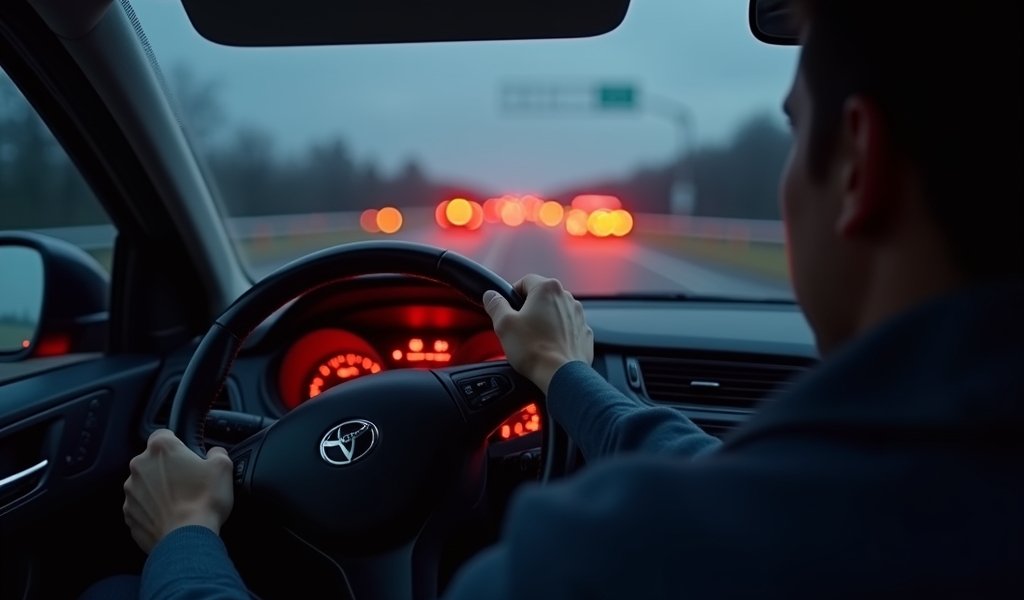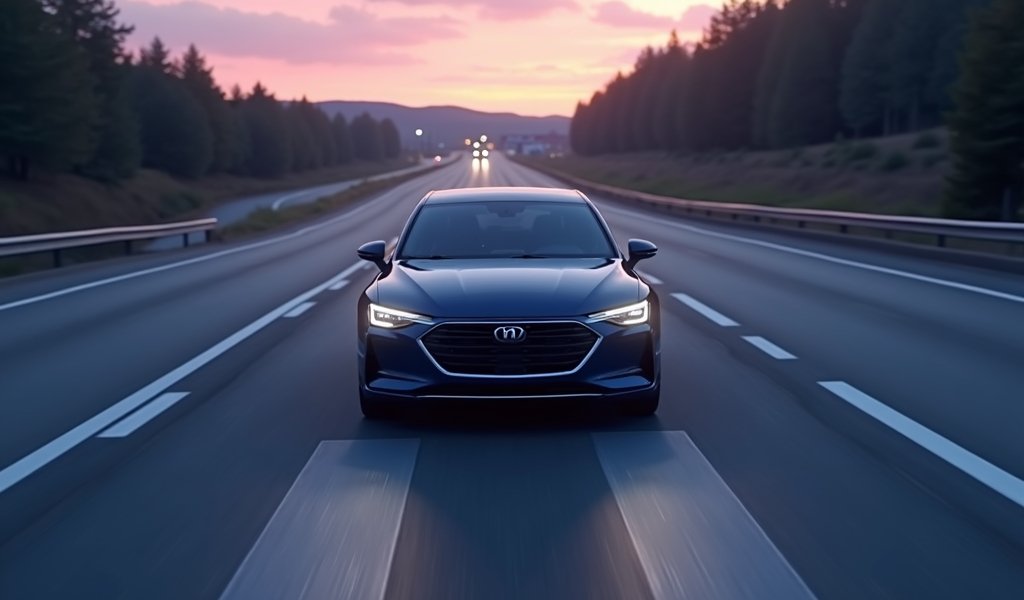Overview
This article provides troubleshooting guidance for Lane Departure Warning (LDW) sensitivity issues, explaining how these safety systems work, common problems (oversensitive or undersensitive alerts), and offering both DIY fixes and recommendations for when professional calibration is needed. It emphasizes the importance of proper maintenance—like regular windshield cleaning and software updates—to ensure these potentially life-saving systems function correctly and prevent accidents caused by unintentional lane drift.
Table of Contents
- Introduction
- Understanding Lane Departure Warning Systems
- Common Lane Departure Warning Sensitivity Issues
- What Causes Lane Departure Warning Sensitivity Problems?
- DIY Fixes for Lane Departure Warning Sensitivity
- When to Seek Professional Help
- Preventative Maintenance Tips
- Conclusion
- Frequently Asked Questions
Introduction
Have you ever been driving along when your car suddenly alerts you that you’re drifting out of your lane—even though you’re perfectly centered between the lines? Or maybe your Lane Departure Warning (LDW) system stays mysteriously quiet even when you actually cross lane markings? If so, you’re dealing with a lane departure warning sensitivity issue.
I’ve seen hundreds of these cases in my shop over the years. Lane departure warning systems are brilliant safety features when they work correctly, but like any technology, they sometimes need a bit of fine-tuning. The good news? Most sensitivity issues can be resolved without major repairs or replacements.
LDW systems use cameras or sensors (typically mounted near your rearview mirror) to monitor lane markings on the road. When the system detects you crossing a line without signaling, it warns you through sounds, steering wheel vibrations, or dashboard lights. This technology has prevented countless accidents, but only when calibrated correctly.
In this guide, I’ll walk you through everything you need to know about lane departure warning sensitivity problems—from understanding why they happen to how you can fix them yourself. We’ll also cover when it’s time to bring in the professionals. Let’s get your system working just right!
Understanding Lane Departure Warning Systems

Before diving into sensitivity issues, let’s make sure we understand how these systems actually work. Lane departure warning is part of a broader category called Advanced Driver Assistance Systems (ADAS), which aim to make driving safer and easier.
LDW systems use forward-facing cameras to detect lane markings on the road. The onboard computer continuously analyzes the video feed to determine if you’re staying in your lane. If you start to drift without using your turn signal, the system triggers an alert.
Different manufacturers implement LDW systems in various ways. Some cars simply warn you with a beep or dashboard light, while others (Lane Keeping Assist systems) will actually nudge your steering to help you stay in your lane. According to research from the Insurance Institute for Highway Safety, these systems can reduce single-vehicle, sideswipe and head-on crashes by 11%.
What’s fascinating about these systems is how they need to distinguish between intentional and unintentional lane departures. That’s where sensitivity comes into play—and why getting it just right can be tricky.
How Sensitivity Settings Work
LDW sensitivity essentially determines how quickly the system will alert you when it detects lane departure. High sensitivity means you’ll get warnings earlier (sometimes before you’ve actually crossed a line), while lower sensitivity means the system waits longer before alerting you.
Many newer vehicles allow drivers to adjust this sensitivity through the infotainment system or dashboard settings. However, even with these adjustments, underlying calibration issues can cause persistent problems.
Common Lane Departure Warning Sensitivity Issues
In my years working on these systems, I’ve found that sensitivity issues typically fall into two categories: oversensitive systems and undersensitive systems. Both can be frustrating and potentially dangerous in different ways.
Oversensitive Systems
An oversensitive LDW system is like that friend who panics at the smallest thing. You might experience:
- Alerts when you’re clearly within your lane
- Constant warnings on narrower roads
- False alarms near highway exits or merges
- Triggering when passing over old, faded lane markings
- Excessive warnings in construction zones
The biggest risk with an oversensitive system is alert fatigue. After enough false alarms, many drivers simply turn the system off completely—eliminating a valuable safety feature. I’ve had customers tell me they disabled their LDW systems for months because they couldn’t stand the constant beeping!
Undersensitive Systems
Conversely, an undersensitive system might:
- Fail to alert you when you’re clearly crossing a line
- Only work on certain roads or in ideal conditions
- Trigger too late to be helpful
- Work inconsistently or intermittently
This creates a false sense of security—you might assume the system will warn you when needed, but discover too late that it’s not functioning properly. Personally, I think undersensitive systems can be more dangerous than oversensitive ones for this very reason.
What Causes Lane Departure Warning Sensitivity Problems?
Understanding what’s causing your sensitivity issues is the first step toward fixing them. Here are the most common culprits I’ve encountered:
Camera Alignment Issues
The most frequent cause I see in my shop is misaligned cameras. These sensitive components need precise positioning to properly detect lane markings. Even minor impacts or vibrations over time can knock them slightly out of alignment.
Symptoms of camera misalignment include the system working better on one side of the vehicle than the other, or functioning inconsistently depending on road conditions.
Dirty or Obstructed Sensors
It sounds almost too simple, but dirt, bugs, or debris on the windshield can seriously impact LDW performance. Your system’s camera typically looks through the windshield from near the rearview mirror. If this area is dirty or obstructed, the camera can’t get a clear “view” of the road.
I’ve fixed numerous sensitivity issues with nothing more than glass cleaner and a microfiber cloth! Similarly, stickers, GPS mounts, or dashboard decorations can sometimes interfere with the camera’s field of vision.
Software Problems
Like any computer-based technology, LDW systems rely on software that can develop glitches or become outdated. Manufacturers occasionally release updates to improve performance or fix known issues with these systems.
If your vehicle hasn’t received a software update in a while, this could be contributing to sensitivity problems. These updates can often be installed during routine service at your dealership or through smart car diagnostic tools in some newer models.
Environmental Factors
Sometimes the culprit isn’t your vehicle at all, but the environment you’re driving in:
- Poor road markings or unusual road designs
- Harsh weather conditions (rain, snow, fog)
- Driving at dawn or dusk when shadows can confuse cameras
- Recently repaved roads with temporary or unclear markings
While you can’t change these factors, understanding how they affect your system can help you adjust your expectations accordingly.
Factory Calibration Issues
Occasionally, vehicles leave the factory with imperfect calibration. This is more common in earlier model years when this technology was newer. If your vehicle has had sensitivity issues since day one, this might be the case.
DIY Fixes for Lane Departure Warning Sensitivity

Before taking your vehicle to a professional, try these DIY approaches that have solved countless sensitivity issues for my customers:
Clean Your Windshield and Camera
Start with the simplest solution! Clean the inside and outside of your windshield thoroughly, paying special attention to the area in front of the forward-facing camera (typically near the rearview mirror).
For best results:
- Use automotive glass cleaner and a microfiber cloth
- Avoid ammonia-based cleaners which can damage special coatings
- Clean in a shaded area to prevent streaking
- Make sure any camera lenses or sensor windows are spotless
You’d be amazed how often this simple step resolves sensitivity issues entirely!
Adjust System Settings
Many vehicles allow you to customize LDW sensitivity through the infotainment system. Check your owner’s manual for the exact location, but typically you’ll find these settings under:
- Vehicle Settings
- Driver Assistance
- Safety Features
- Lane Departure Warning
Look for options like “Early,” “Medium,” or “Late” alert timing, or sensitivity levels from Low to High. Experiment with different settings to find what works best for your driving style and common routes.
Check for System Updates
Some newer vehicles allow you to check for and install software updates through the infotainment system. For others, you might need to visit a dealership or use an OBD-II scanner with update capabilities.
If your vehicle is several years old and has never had a software update, this could potentially resolve sensitivity issues, especially if the manufacturer has released patches specifically addressing ADAS functionality.
Reset the System
Sometimes the old “turn it off and back on again” approach works wonders. Many vehicles allow you to reset driver assistance systems to factory defaults:
- Find the reset option in your vehicle’s menu system
- Follow prompts to reset ADAS or LDW specifically
- In some cases, disconnecting the battery for 15+ minutes can reset these systems (though this will reset all your vehicle’s electronic systems)
After resetting, take your vehicle for a test drive on a clearly marked road to see if performance improves.
Remove Aftermarket Accessories
Items mounted to your windshield or dashboard can sometimes interfere with LDW cameras. Temporarily remove:
- Dashboard covers
- GPS devices
- Phone mounts
- Radar detectors
After removing these items, test your LDW system again to see if there’s improvement. This can help determine if any accessories are causing interference.
When to Seek Professional Help
While DIY approaches resolve many LDW sensitivity issues, some problems require professional attention. Here’s when to call in the experts:
After Windshield Replacement
If you’ve recently had your windshield replaced and are experiencing LDW problems, proper calibration is almost certainly needed. Many backup camera and ADAS systems require precise recalibration after windshield work. Unfortunately, not all glass shops perform this crucial step.
Studies from the American Automobile Association show that improper ADAS calibration can result in systems that fail to alert drivers in potentially dangerous situations.
After Accidents or Impacts
Even minor fender benders can knock sensors out of alignment. If your LDW system started having issues after any kind of collision or significant impact (like hitting a large pothole), professional calibration is likely necessary.
Persistent Issues Despite DIY Attempts
If you’ve tried all the DIY fixes without improvement, it’s time for professional diagnosis. There could be underlying hardware issues that require specialized equipment to identify and resolve.
What to Expect from Professional Calibration
Professional calibration typically involves:
- Diagnostic scanning to identify specific issues
- Static calibration using specialized targets and equipment
- Dynamic calibration involving road testing
- Software updates if available
This process can cost between $250-600 depending on your vehicle make and model. While not inexpensive, proper calibration ensures your safety systems work correctly—something you can’t put a price on.
When selecting a shop for this service, make sure they have specific experience with your vehicle brand and ADAS calibration. Dealerships often have the advantage of manufacturer-specific equipment and training, though some independent shops specialize in these systems as well.
Preventative Maintenance Tips
As with most automotive issues, prevention is better than cure. Here are my top tips for keeping your LDW system working properly:
Regular Cleaning
Make cleaning your windshield (inside and out) part of your regular maintenance routine. Pay special attention to the area around your rearview mirror where the camera is typically located. A quick wipe during gas station stops can prevent buildup that might affect performance.
Protect Your Windshield
Since windshield replacement often necessitates recalibration, protecting your glass is worthwhile:
- Maintain safe following distances to prevent stone chips
- Repair small chips before they spread into cracks
- Consider windshield protection film for additional defense
These simple steps can save you hundreds in calibration costs down the road.
Stay Updated
Check periodically for software updates for your vehicle’s systems. Manufacturers continue improving these technologies through software enhancements that may address sensitivity issues before they become problematic.
Note Environmental Limitations
Be aware of conditions that might affect your LDW system:
- Heavy rain or snow can reduce effectiveness
- Night driving may present challenges for some systems
- Roads without clear markings will cause inconsistent performance
Understanding these limitations helps set realistic expectations and prevents frustration.
Conclusion
Lane departure warning sensitivity issues can range from minor annoyances to significant safety concerns, but most can be resolved with the right approach. I’ve seen hundreds of drivers go from frustrated to satisfied after addressing these common problems.
Remember that the perfect sensitivity setting strikes a balance—alerting you when you’re genuinely drifting while avoiding unnecessary warnings. What works best might depend on your driving style, typical roads, and personal preferences.
If DIY fixes don’t solve your issues, don’t hesitate to seek professional help. A properly calibrated LDW system can potentially save lives by alerting you during those momentary lapses in attention we all experience.
Taking care of your lane departure warning system is an investment in your safety. With the tips in this guide, you’re now equipped to maintain and troubleshoot this important technology. Drive safely!
Frequently Asked Questions
Can I drive with my lane departure warning system turned off?
Yes, you can drive safely with the system off, but you’ll miss the safety benefits it provides. Studies show these systems can reduce certain types of accidents by up to 11%.
How often should I calibrate my lane departure warning system?
Most systems only require calibration after windshield replacement, accidents, or when experiencing persistent problems. Regular maintenance typically isn’t necessary unless issues arise.
Why does my lane departure warning work better on highways than city streets?
Highway lane markings are typically clearer, wider, and more consistent than city streets. Most systems are designed primarily for highway use where lane departures can be most dangerous.
Will tinted windows affect my lane departure warning system?
Aftermarket tinting can interfere with cameras and sensors, especially if applied to the portion of windshield where ADAS cameras are located. Factory-tinted glass is designed to work with these systems.
Can weather conditions affect lane departure warning sensitivity?
Absolutely! Rain, snow, fog, and even strong sunlight can reduce system effectiveness. These systems rely on clear visibility of lane markings, which weather conditions can obscure.

